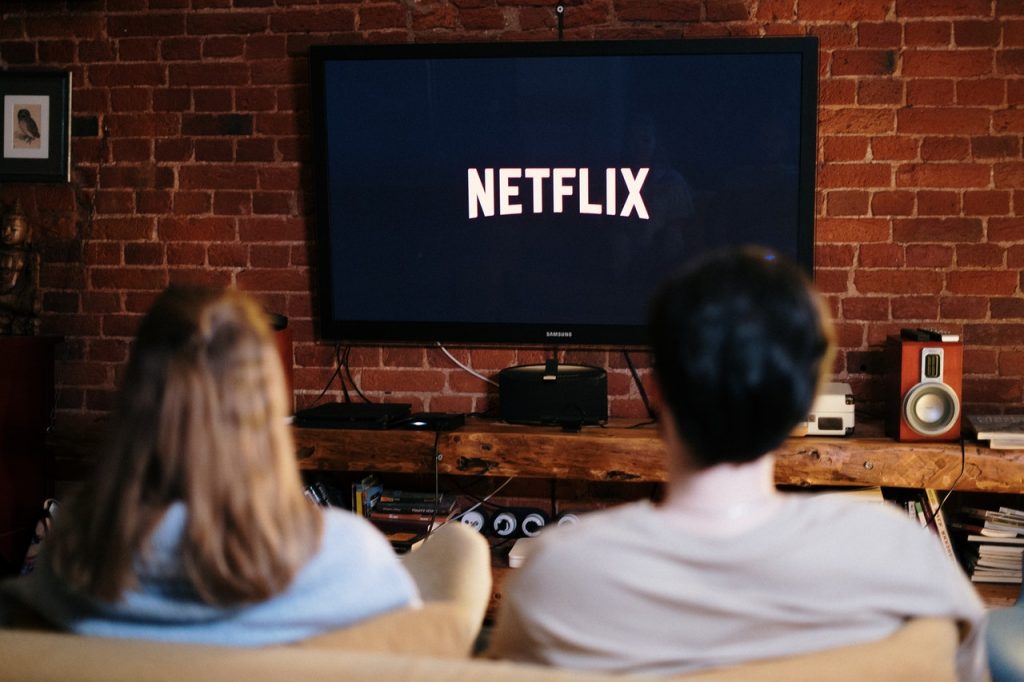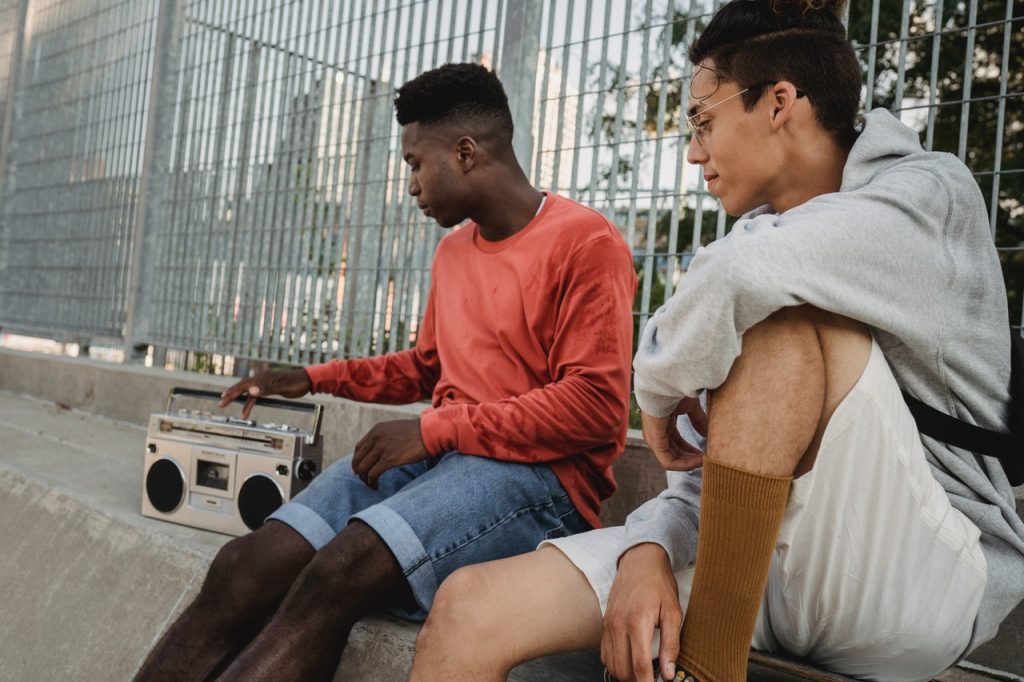The last year has been a strange one. We’ve been unable to create new memories that are memorable for the right reasons – no holidays, no cherished get-togethers with friends and family, no parties…
Instead, what is guaranteed to stick in our mind for years to come when we look back on 2020 and 2021 is lockdown.
As such, it should come as no surprise that content creators and brand makers are pulling from the dusty archives of days gone by to inspire us, to cheer us up and, let’s face it, to encourage us to spend our money.
Nostalgia, it seems, is so hot right now. From clothing and branding to TV and music, casting our gaze backwards has never felt so fresh and forward thinking. If you’re wondering what’s going on, here we explore why nostalgia is the megatrend of the 2020s.
THE SCIENCE OF NOSTALGIA
According to psychological research, positive memories activate the reward pathway in the brain, which is essentially a release of chemicals that make us feel good. This is a catalyst for us to repeat the act in order to feel good again – in this case, recalling happy memories. In a nutshell, that is why reliving fond experiences you’ve had makes you feel good, especially in a crushingly bleak period like today’s global pandemic.
Yep, there’s no better way to escape boring times than by indulging in escapism and nostalgia. What’s more, it’s an inclusive feeling available to all. Research by GlobalWebIndex found feelings of nostalgia aren’t restricted to a certain age group but are a common feeling for everyone. In fact, nostalgic environments have even been shown to soothe suffering in dementia patients.
So, why is nostalgia everywhere right now? In simple terms, in order to make this year bearable, we’re going back to happier times.
Since modern technology has given us incredible access to things from the past, be it music, photos, videos, articles, and everything in between, it’s easy to understand why nostalgia has become a key trend in today’s world.
So much so that we’re expecting to see this nostalgic trend continue, and begin to permeate food, music, fashion and TV, in particular, in the coming years.
NOSTALGIA IN COMFORT EATING
Scientists define ‘comfort food’ as “foods people eat in response to specific circumstances, in order to feel pleasant or psychologically comfortable,” and since the beginning of 2020, this is something we’ve all felt.
Comfort food can evoke nostalgia, and we’d go as far as to say that nostalgia is a key ingredient in many of our favourite meals. As explained by Science Direct, “comfort foods can also serve an important role in terms of triggering nostalgia.” Indeed, comfort foods offer consumers something soothing and familiar.
This is something food brands and restaurants alike have picked up on in the last year, with nostalgic comfort foods seeing a boom in popularity during the pandemic. As reported by The National, “Nostalgia plays a key role in the food trends which are expected to be prominent this year…Old-school desserts such as sticky toffee pudding and cherry pie are on the rise, as well as trifles – a pudding which saw a 35% increase in sales at Waitrose last year.”
Searches for nostalgic 1970s recipes saw a surge during lockdown with Waitrose reporting a 300% increase in those searching for beef stroganoff, prawn cocktail and baked Alaska recipes. It seems many of us are revisiting our childhood and recreating classic dishes that our parents and grandparents served. It’s no surprise, then, that school dinner cake and other sponge puddings have also risen in popularity of late…and we just love it.
NOSTALGIA ON NETFLIX
Similarly to comfort eating, we’ve been comfort watching recently. As Stylist explains, “Psychologists have said that watching certain TV shows can help us to feel calm in an increasingly anxious world”, and to call the current state of the world ‘anxious’ would be putting things mildly, don’t you think?
We’ve been binging and streaming marathons of our favourite classic shows, with Friends, Buffy, Sabrina, Dawson’s Creek and Cold Feet all on repeat in the IDEAL household lately. Care to join us on the sofa for an episode?

NOSTALGIA IN FASHION
Nostalgic fashion has soared through the pandemic, too, bringing comforting memories of simpler times. After binge-watching all those 90s and early 00s shows on Netflix, it’s only natural that we want to emulate the fashion from the shows, too.
As the Guardian reports, “The nostalgia economy…is the most powerful trend in fashion…is a reaction to what’s happening in the world.”
Fashion is like a revolving door; out with the old and in with the new, then in with the old again. Admittedly, there are some fashion trends that have rightly remained in the past (that skirts over trousers trend of the 90’s…we’re happy that hasn’t made a comeback). But generally speaking, while fashion has always had a nostalgic element to it, the callbacks to earlier decade’s clothing choices have gone into overdrive recently.
Smaller shaped shoes have been ditched for huge, clunky, 90s-style trainers, with both high street stores and designer labels getting involved. Boot-cut jeans, bum bags, and three-quarter fleeces have all certainly become fashion statements of the 2020s, and block heeled sandals, which have existed in the fashion world since around the 1950s, are strutting along virtual catwalks in 2021.
NOSTALGIA IN SOCIAL MEDIA
We have daily reminders of nostalgia on social media, too – think FlashbackFriday and Throwback Thursday. Social media is hungry for nostalgic content, dialling into our insecurities about just how screwed the world is right now.
Facebook, Snapchat, and Instagram all have elements of nostalgia on their platforms. All of these apps offer memories that show you what you posted or saved that day years back, allowing you to look through pictures, videos, and posts that you might’ve otherwise forgotten about, and rendering them in nostalgic sepia tones for good measure.
Spotify Wrapped is an innovative feature that leans heavily into recent nostalgia, too, revealing your streaming trends over the past year and showing you the top 50 songs that you listened to. The fact that Dua Lipa’s ‘Future Nostalgia’ album dominated this writer’s Wrapped is, perhaps, not a coincidence…
NOSTALGIA IN MUSIC
Speaking of music, it can be effective in transporting us right back to a powerful memory, which might explain why we’ve recently been revisiting songs we loved in our teens. In fact, research has shown that music makes us feel incredibly nostalgic by associating it with certain experiences.
Audio cassettes, not usually known for their fantastic audio quality, have also experienced a revival. Cassette sales increased two-fold in the first half of 2020, reaching a record high in 15 years. However, it is a young audience driving these sales, with pop acts like Lady Gaga being the most popular. The same can be said for vinyl, almost reaching a 30-year high and their highest point since the Britpop boom. It is predicted that nostalgia is driving this trend as streaming services like Spotify provide unlimited access to music of all kinds from the past.
Almost four in 10 said they were prepared to pay more for a content streaming service that provided access to older content unavailable elsewhere…which rather explains why Spotify are endeavouring to make it more accessible.

NOSTALGIA IN THE ADVERTS WE SEE
Successful marketing is all about selling customers a feeling, and nostalgia is the ideal chance to do just that. Brands rely on creating an emotional connection with customers, making them feel familiar and comfortable with the company, product or location so they’re more likely to return.
Retaining customers is incredibly important, after all, and companies have been returning to their roots, offering a nostalgic experience by rebranding their logos and packaging into something more inherently ‘old school’.
Burger King’s first rebrand in 20 years is a nostalgic one, recreating their retro logo from the 1970s. The logo diverts away from ‘artificial’ and ‘synthetic’ and attempts to capitalise on better times. Designer Lisa Smith said: “We explored a lot of different design territories, but kept coming back to the brand’s original iconic logo from 1969 and 1994 when Burger King looked at its best.’’
She goes on to explain that Burger King were ‘’inspired by how it has grown to have such an iconic place in culture – from Back to the Future, Gremlins through to more recently Stranger Things and BK’s Warhol campaign.”
It certainly makes sense.
THE BOTTOM LINE
In difficult times, nostalgia can be the most comforting feeling you can find, throwing us back to a happier, more carefree era. While we’re escaping to the past, we can’t help but wonder, what will the next big trend be? Something new and forward thinking or, more likely, something that casts covetous glances backwards.
Take us back, indeed.





